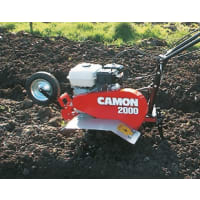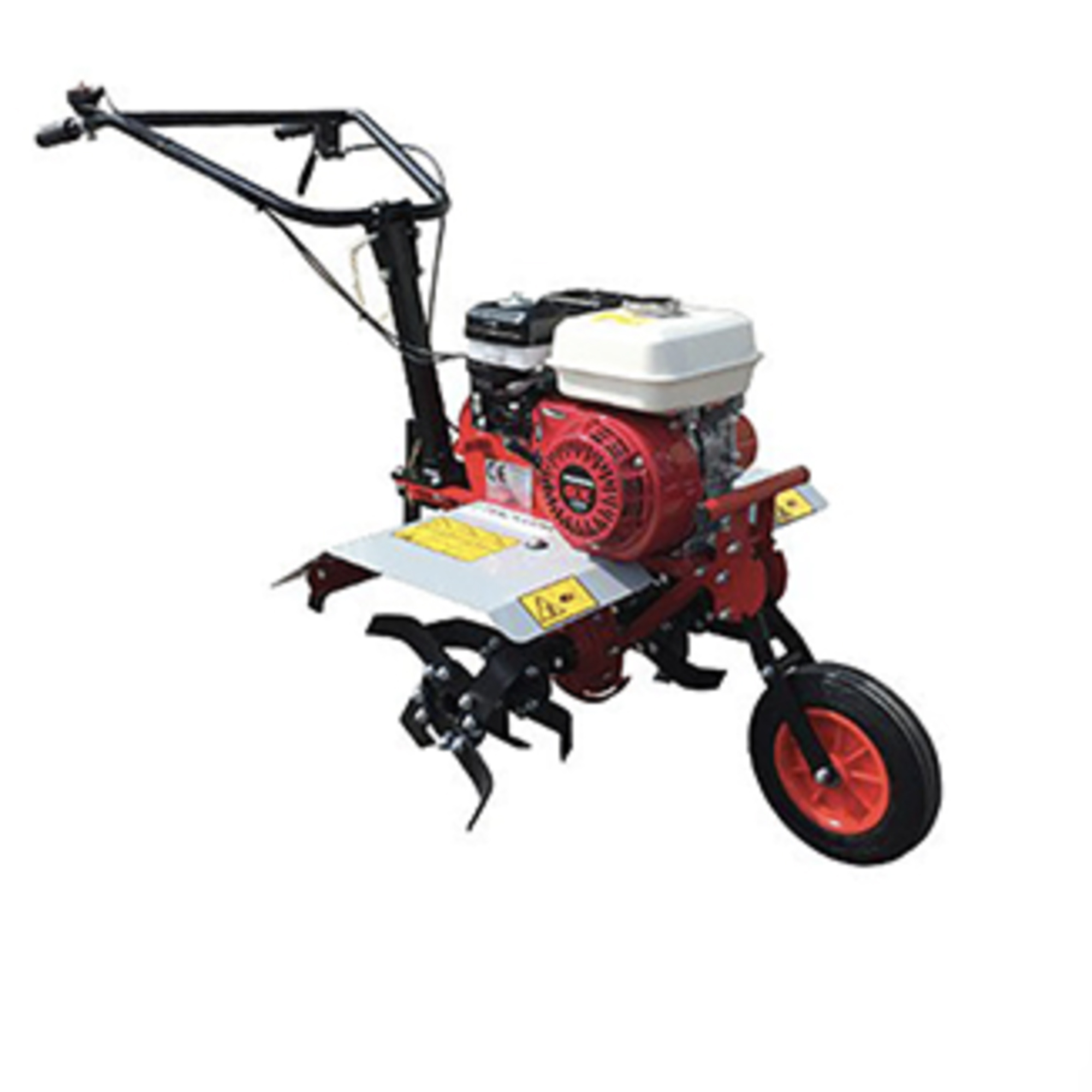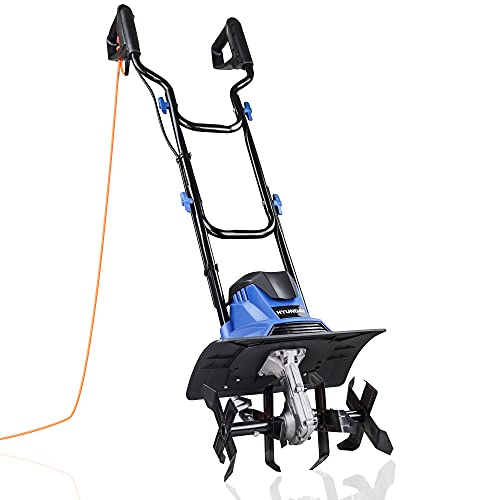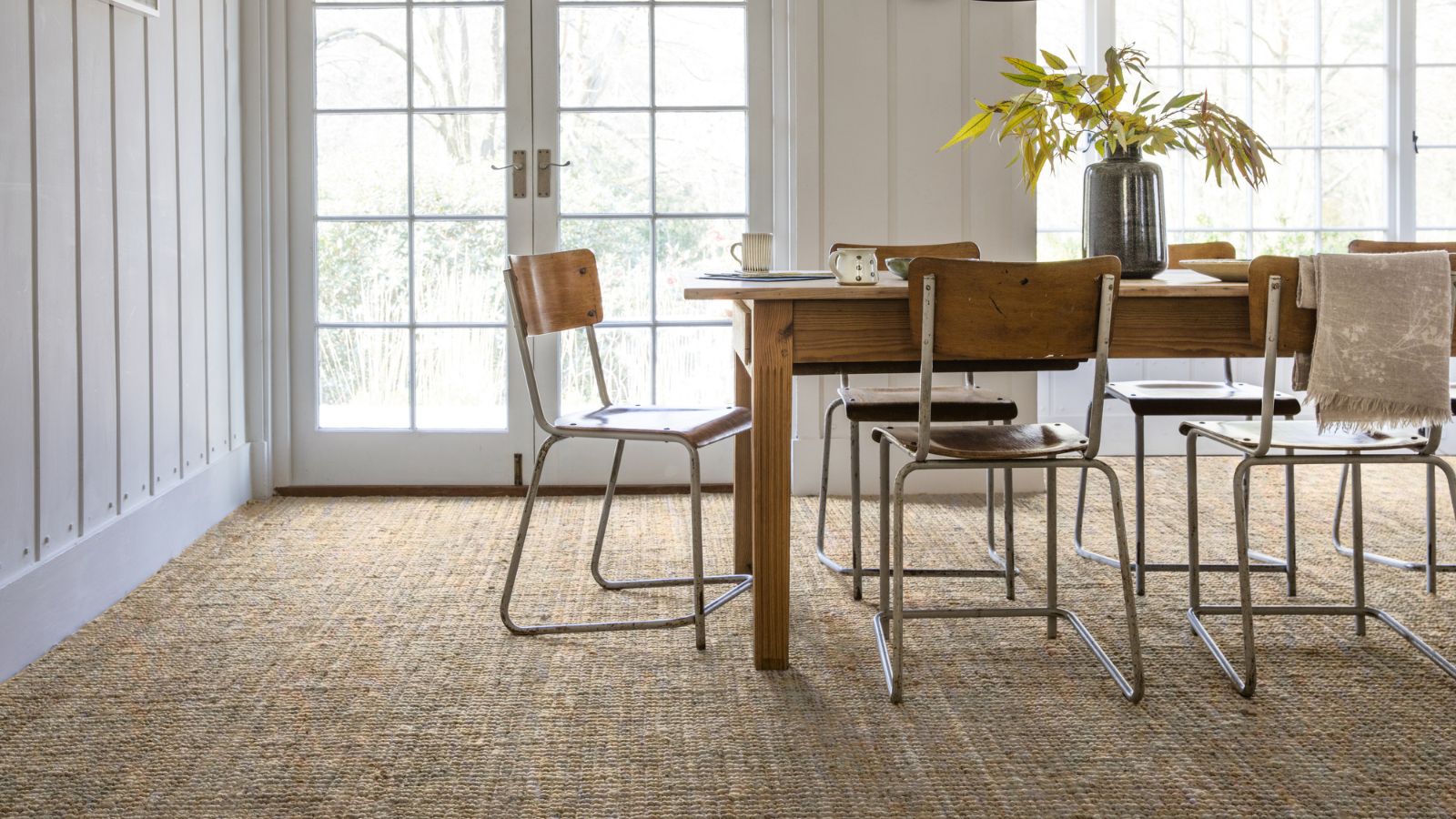What is a rotavator and do you need one for your garden?
The low down on rotavators and how to use them in your garden landscaping
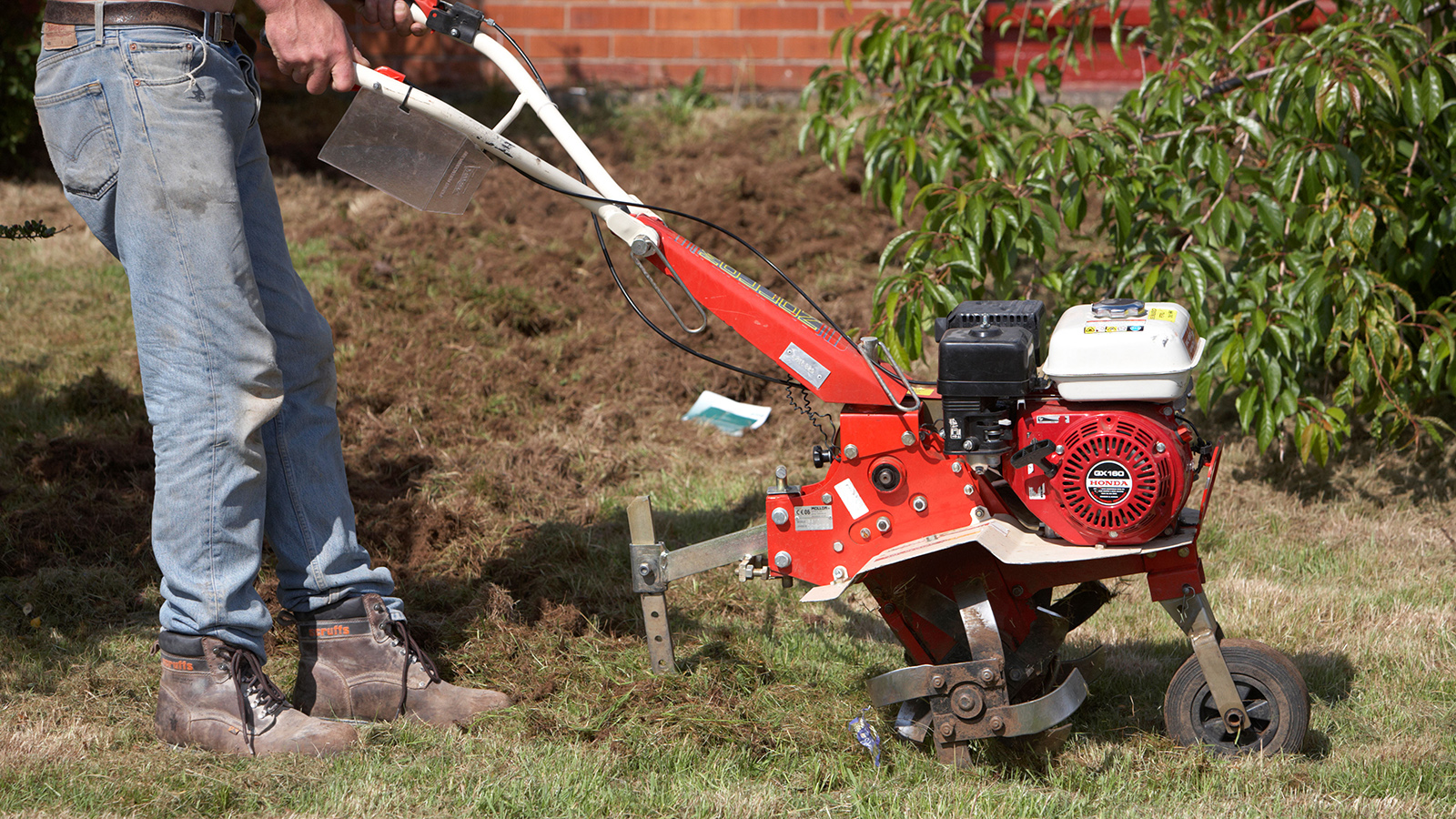
Rotavators are a type of tool used in gardening and agriculture to break up soil. They can be handy tools for certain jobs, but this can depend on scale. There are different-sized rotavators on the market from huge agricultural models that attach to tractors, to smaller hand-held ones that are around the same size as a lawnmower.
"A rotavator is a motorised gardening tool equipped with rotating blades or tines designed to break up and aerate soil, making it easier to plant crops or flowers. They're commonly used for the purpose of soil preparation in gardening, landscaping and farming activities," explains construction expert at Springfield Steel Buildings John Davis.
Read on to find out whether a rotavator is worthwhile for your garden.
What is a rotavator and how does it work
"I have spent many years rehabilitating and stewarding land, and I've had a lot of experience with various garden tools - including rotavators," says Victoria Cummins, Senior Editor at PlantWhisperer.
"A rotavator is a rotating tiller that uses tines or blades to break up soil. In the past, I used one almost daily on a large vegetable farm. They can be handy tools but also have some important drawbacks worth considering," says Victoria.
"At their best, rotavators can quickly prepare the ground for planting. When I was starting hundreds of seeds every spring, being able to till several acres a day was a real time-saver. They're also useful for mixing amendments like compost into soil."
"In theory, a rotavator can level a garden. However, in practice it often takes several passes of adjustment to really flatten land," says Victoria.
Bring your dream home to life with expert advice, how to guides and design inspiration. Sign up for our newsletter and get two free tickets to a Homebuilding & Renovating Show near you.

A gardening expert who specialises in permaculture. Her work focuses on building soil quality, cultivating fruit trees, and wild harvesting. Collaborating with homeowners, landowners, farmers, gardeners, and communities, she dedicates her expertise to healing landscapes and enhancing food production to create resilient, sustainable environments.
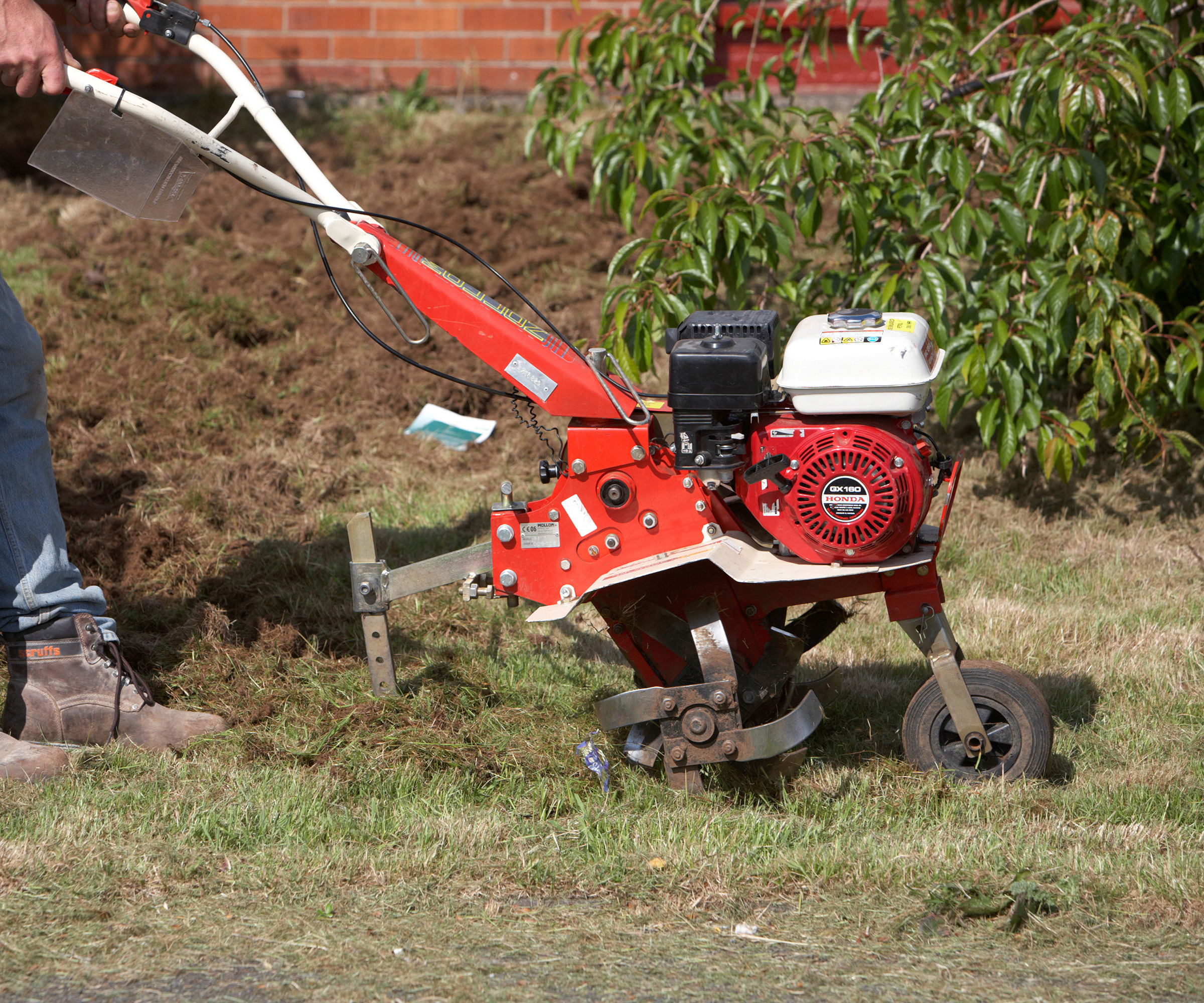
Shop rotavators for hire and to buy
Top tips for using rotavators
"In my experience, these tools are fantastic for breaking down clumps of soil, and mixing in various types of compost or fertiliser, while leaving enough of a fine seedbed for planting," says John Davis.
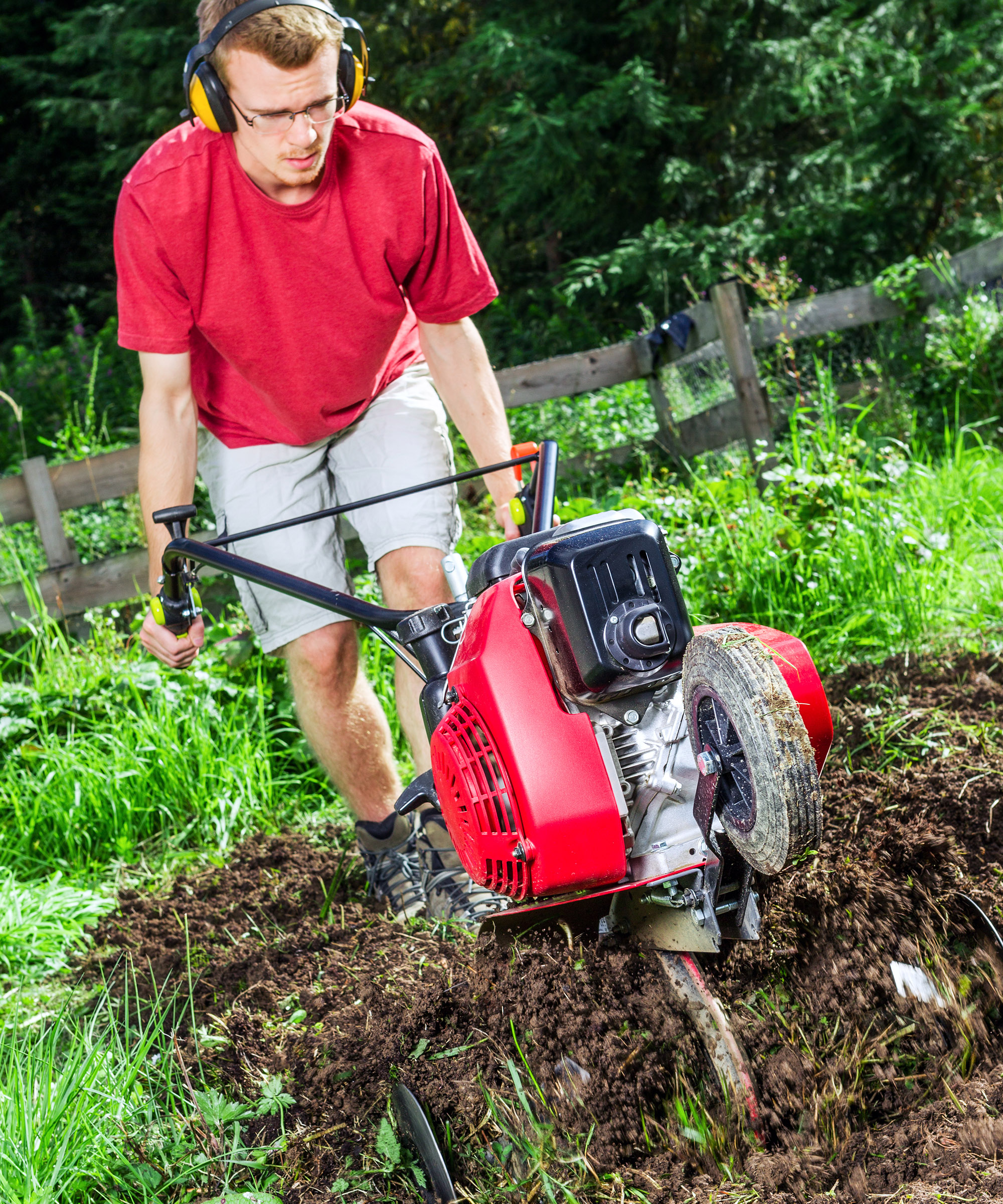
- Don't choose a rotavator that's too big or small for your job. A mini tiller is great for small garden areas up to about 10sqm. A bigger machine will be needed for an allotment for example.
- Prep your soil area properly by getting rid of weeds that are overgrown which could become entangled in the blades. Stones and other debris can also damage blades.
- Soil that is either very dry or very wet will be more difficult to rotavate, so wait until soil is moist but not wet. Never rotavate waterlogged soil.
- Rotavators are heavy-duty and take a lot of physical effort to use so be aware of this if you have mobility issues or are working by yourself.
- Try to work as systematically as possible over your prepared area. Work in straight lines which slightly overlap each other.
- Dress appropriately with boots, ear defenders, safety goggles and gloves.
Are rotavators worth it?
"Previously un-dug ground can be hard and compacted and a rotavator is ideal for breaking it up. Whether you need a rotavator depends on the size of the area to be dug, the soil and your ability to operate a powerful machine like a rotavator," says Fiona Jenkins garden expert at MyJobQuote.
"Most vegetable plots can be dug by hand although it will take longer when done manually. The soil in your garden or allotment can be a deciding factor when deciding whether to use a rotavator. Clay soil that has never been dug can be difficult to work with a spade or garden fork," says Fiona.
"Conversely, using a rotavator, depending on its size, may only scrape the top if the ground is dry, hard and compacted. Using a rotavator on wet clay soil produces large clods of earth which need to be further broken down if the area is to be planted. Sandy or loam soil is easiest for using a domestic, petrol-powered rotavator," says Fiona.
Victoria Cummins warns that whilst rotavators may seem handy, they carry some long-term drawbacks. "For casual gardeners, they’re rarely necessary when lighter tools like a broad fork, scuffle hoe or aerator can prepare soil just as well," says Victoria.
"A rotavator’s power should likely be reserved for larger-scale operations like market farms. The needs will depend on your specific site and goals, but I’d always recommend lower-impact options first whenever possible," says Victoria.

A landscaper and gardening expert with over 25 years of experience in the industry. Currently she works for MyJobQuote as their resident expert on all things gardening. She is highly knowledgeable and her expertise have featured in many reputable publications.
FAQs
Will a rotavator get rid of weeds?
"As for weeds, a rotavator will certainly dig them up. But it also brings buried weed seeds up to the surface where they can re-root. And the slicing action risks spreading some invasive weeds further. Personally, I prefer approaches with less risk of propagating weed problems, like solarisation or smothering crops," says garden tool expert Victoria Cummins.
What's the difference between a rotavator and a cultivator?
"The main difference between a rotavator and a cultivator lies in their primary functions. I find rotavators to be more heavy-duty, while cultivators are lighter and intended for shallow soil tillage," says John Davis, Owner and Operational Director at Springfield Steel Buildings.
"While a rotavator slices randomly through soil, a cultivator has shallower tines that only stir the top few inches. This doesn't drag up as many sleeping seeds. Due to their gentler disruption of soil structure, cultivators don't weaken soil texture over time like a rotavator can through overuse," says Victoria Cummins.

John Davis possesses extensive experience in construction and land development. With a focus on sustainable building practices, he understands the importance of landscaping choices in relation to property value and environmental impact.
Can I use a rotavator to level a garden?
"A rotavator is useful for digging over an area that you want to level, but it won’t create a level surface by itself," explains Fiona Jenkins garden expert at MyJobQuote.
"Once the earth is broken up you will need to use a garden rake to level the surface or a wheelbarrow and spade to move soil from one area to another to achieve an even result," says Fiona.
If you're planning on overhauling your garden design, have a look at our guide to landscaping costs.

Teresa was part of a team that launched Easy Gardens in 2018 and worked as the Editor on this magazine. She has extensive experience writing and editing content on gardens and landscaping on brands such as Homes & Gardens, Country Homes & Interiors and Living Etc magazine. She has developed close working relationships with top landscape architects and leading industry experts, and has been exposed to an array of rich content and expertise.
In 2020 Teresa bought her first home. She and her partner worked alongside architects and builders to transform the downstairs area of her two bedroom Victorian house in north London into a usable space for her family. Along the way she learned the stresses, woes and joys of home renovation, and is now looking to her next project, landscaping the back garden.
